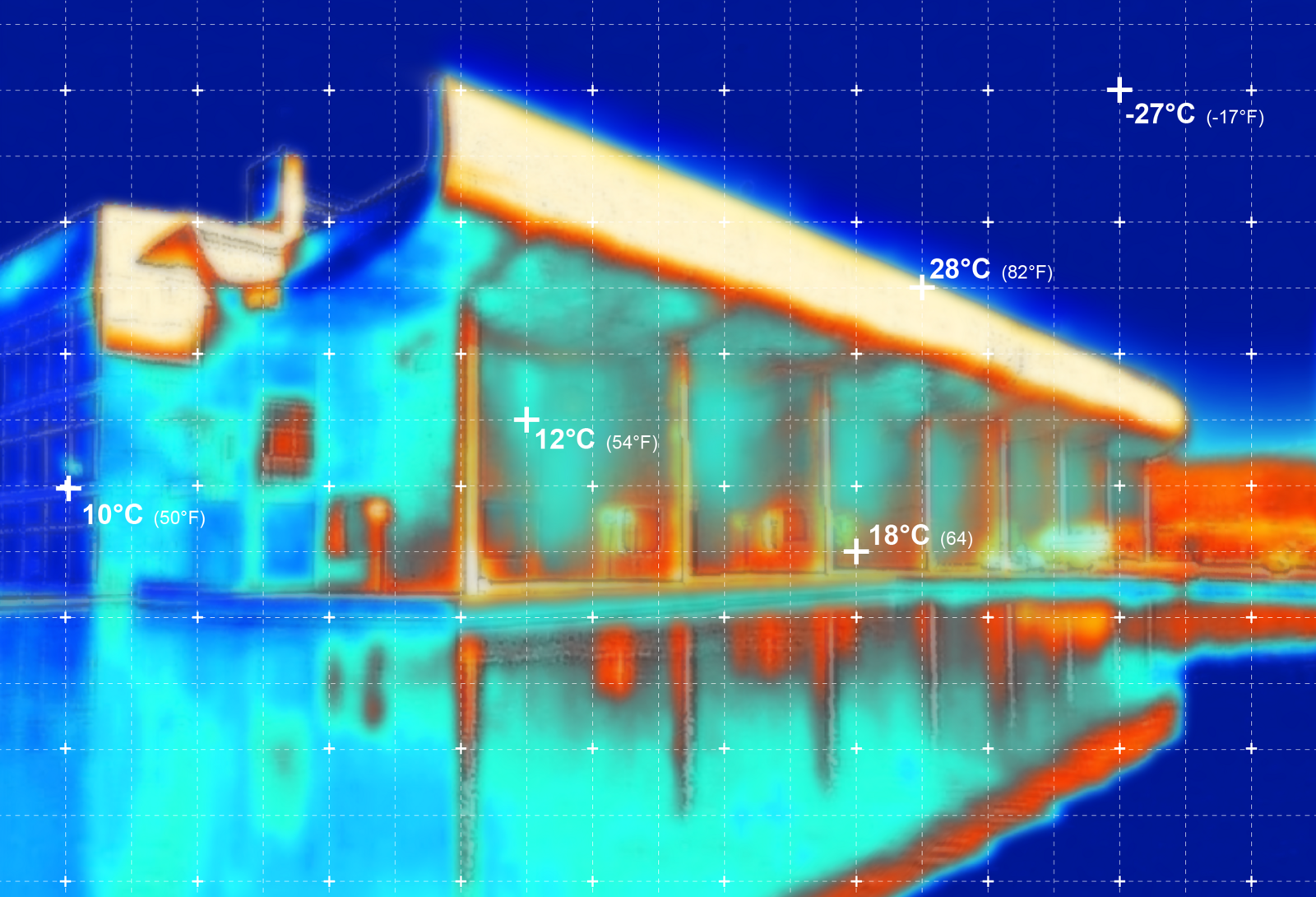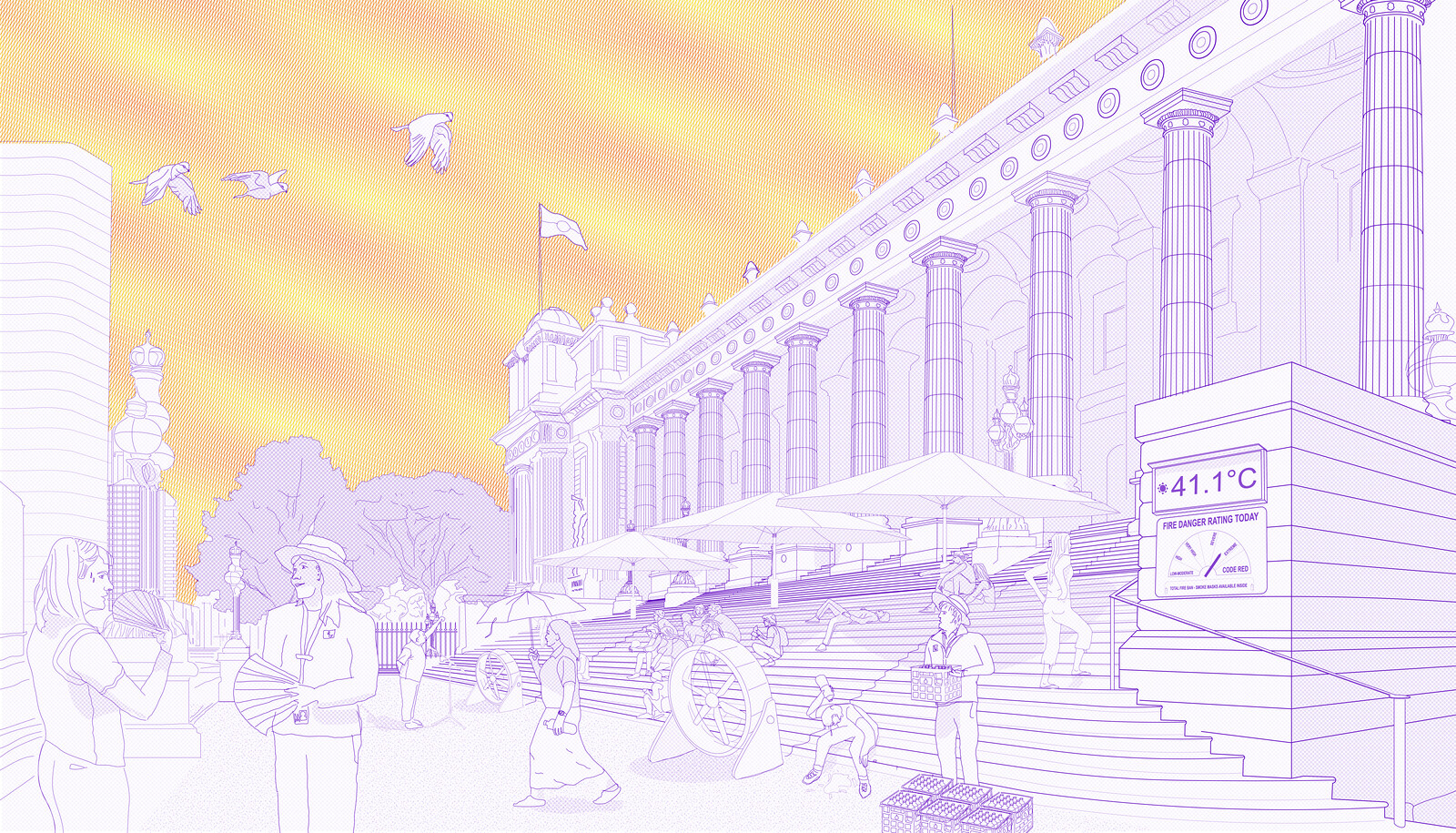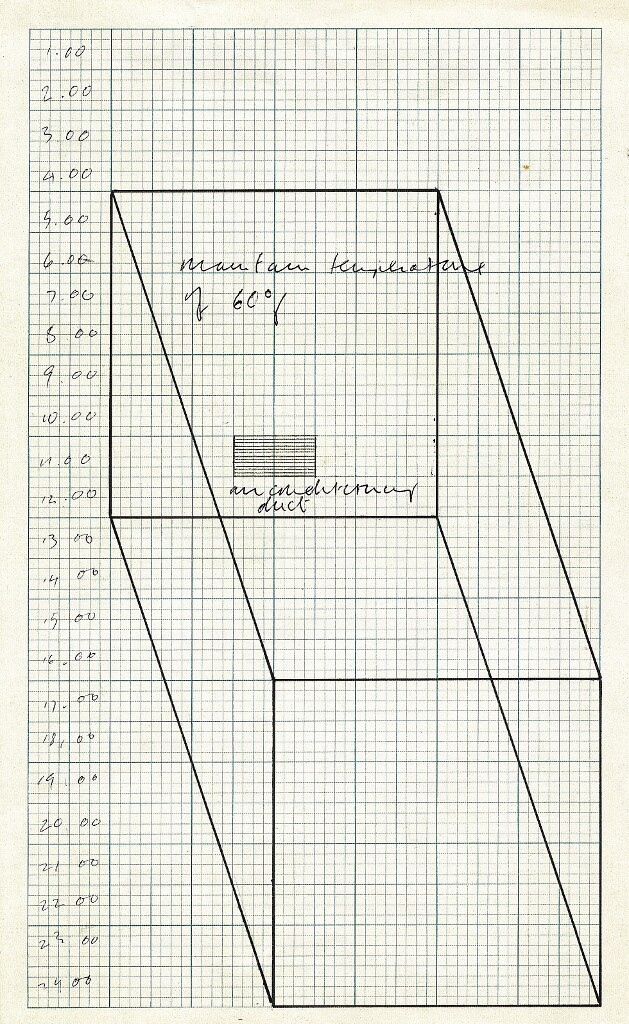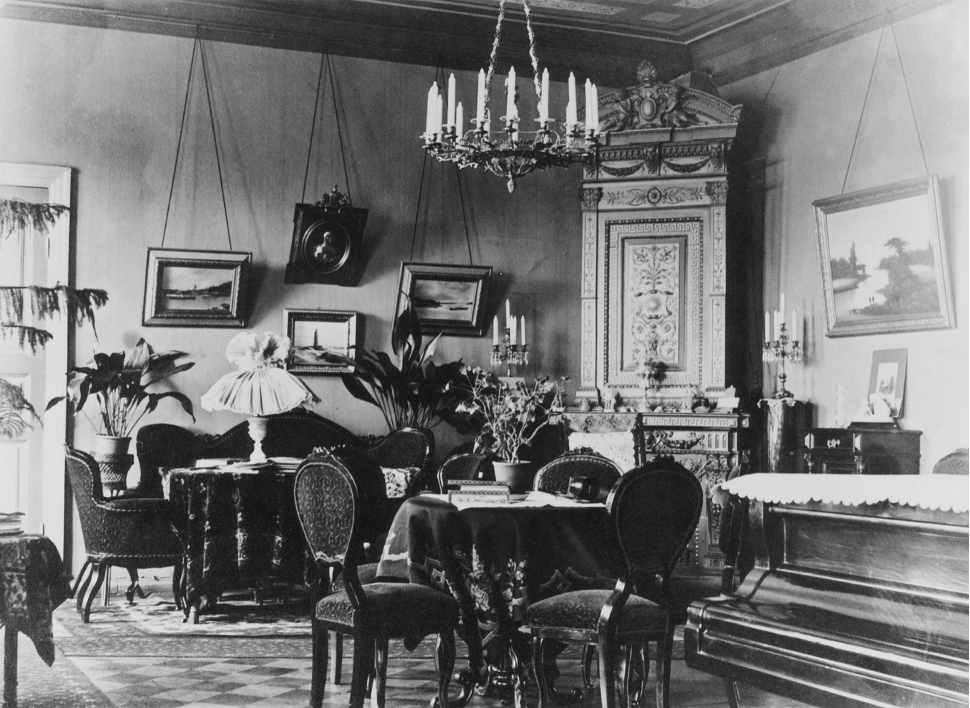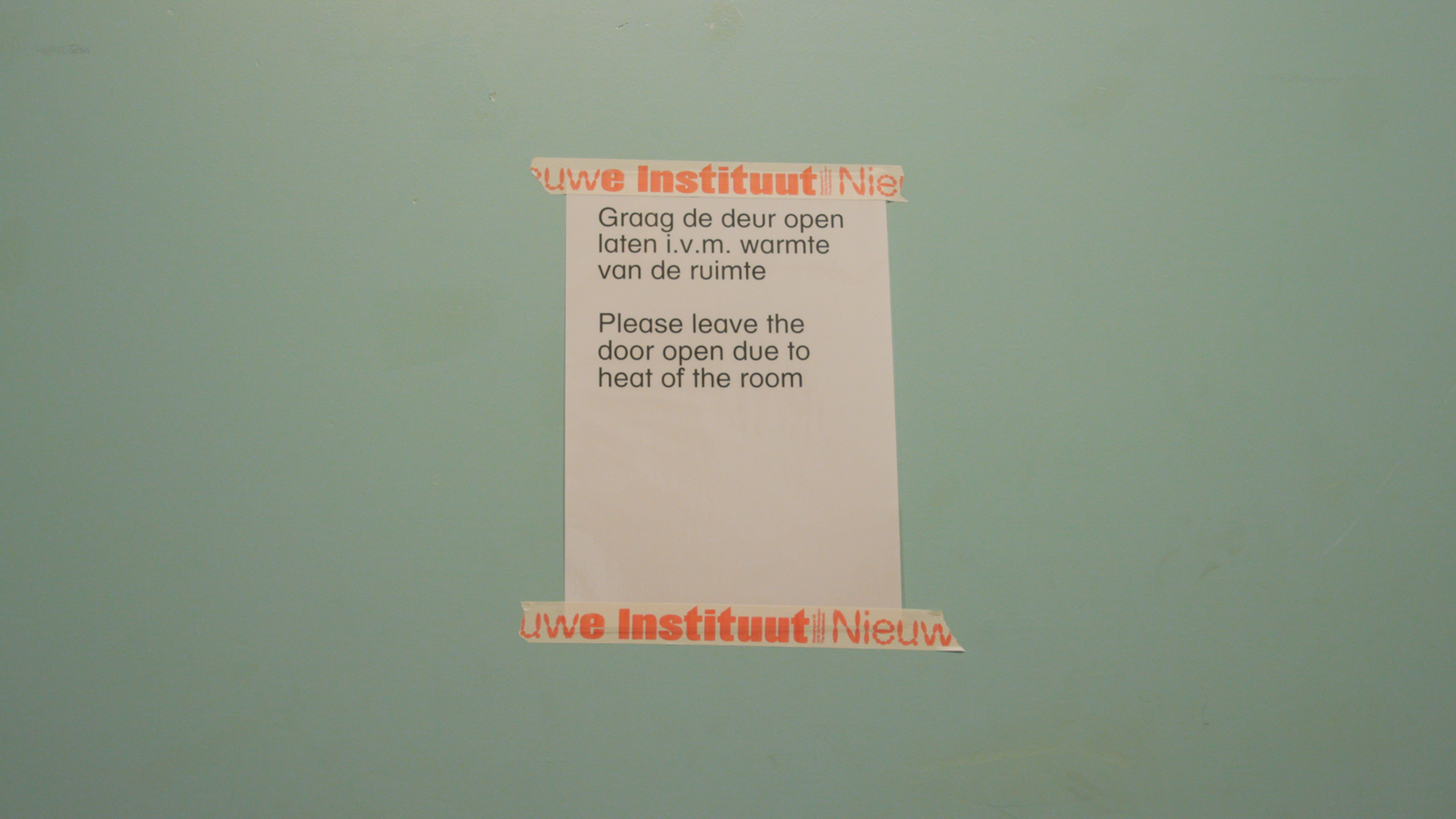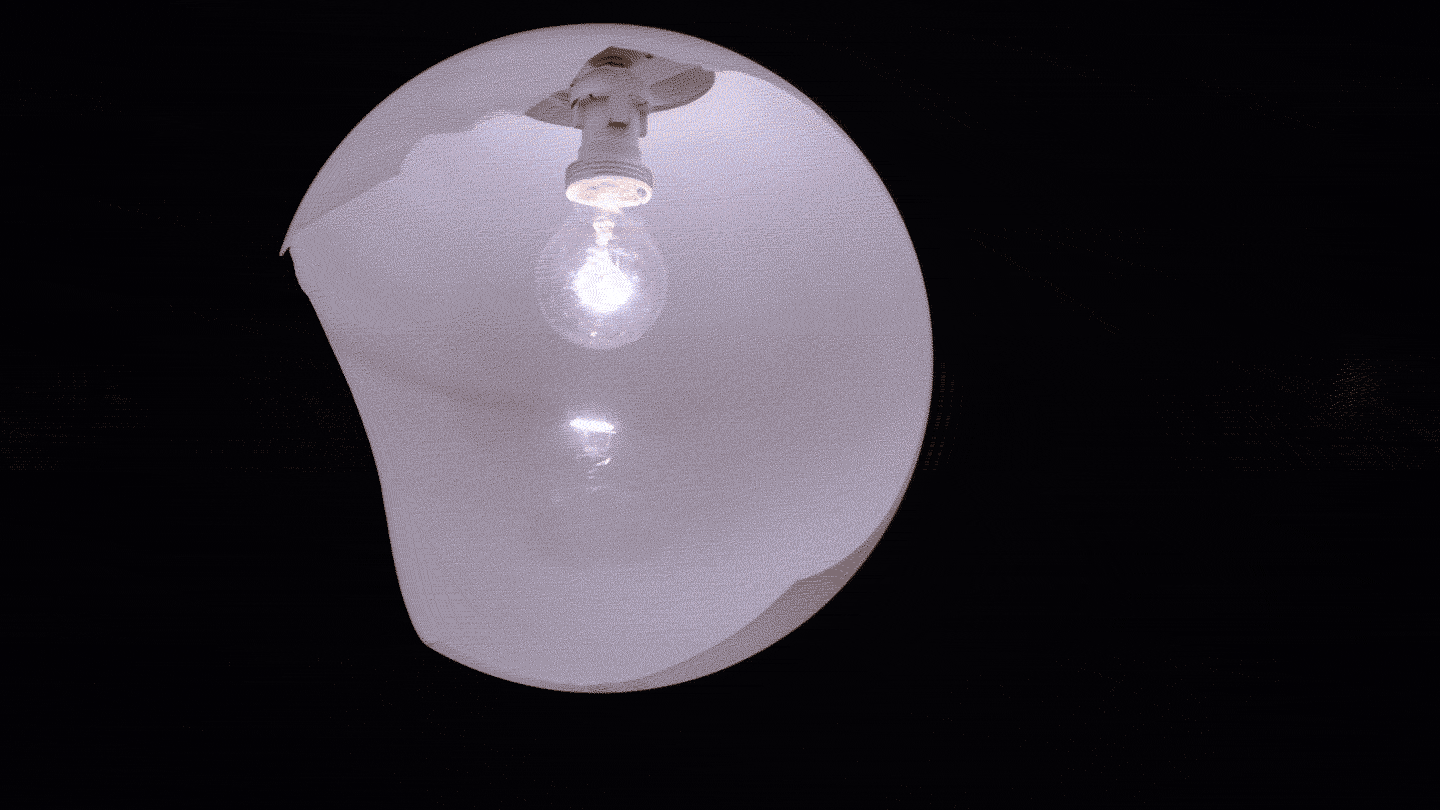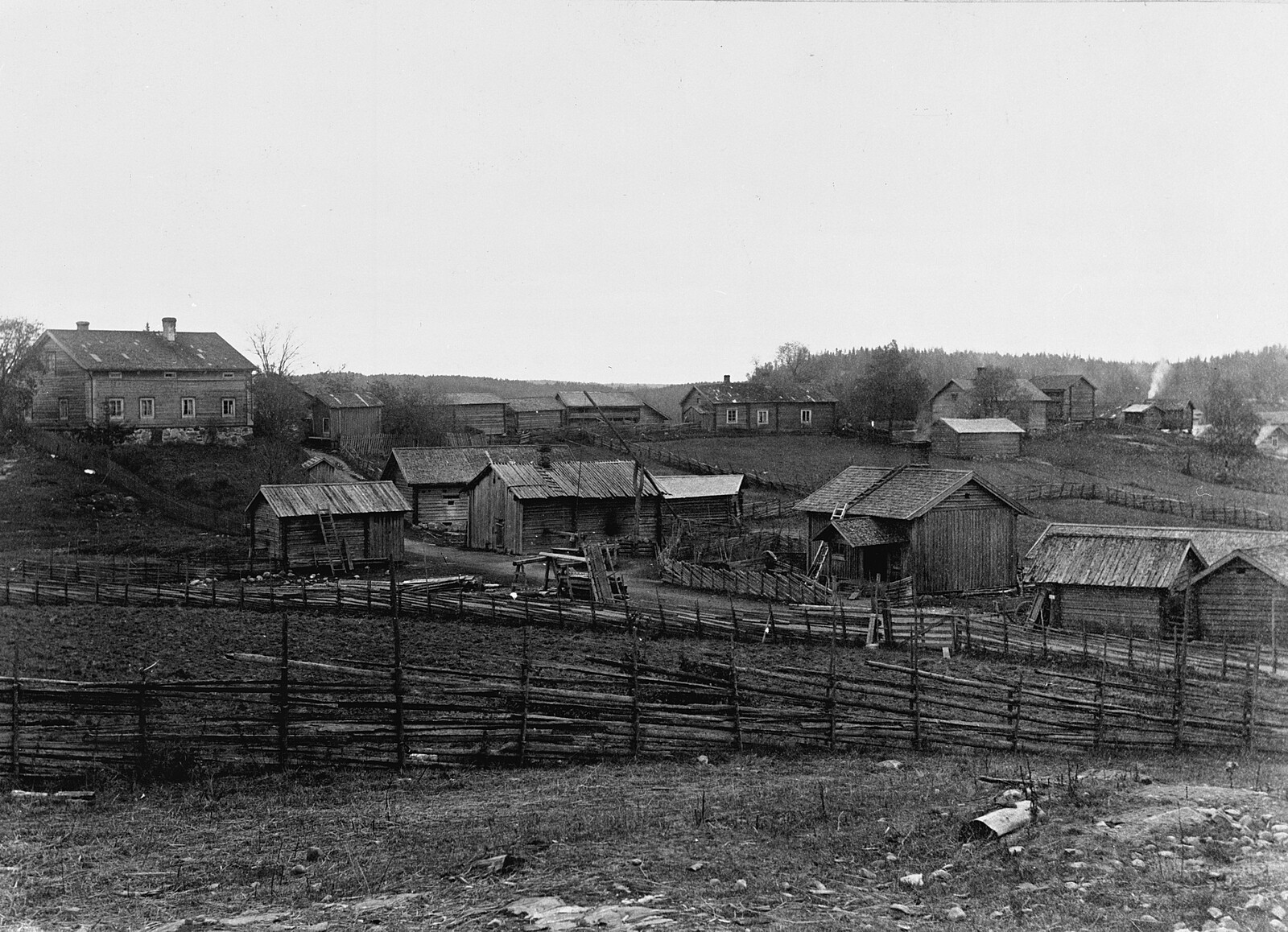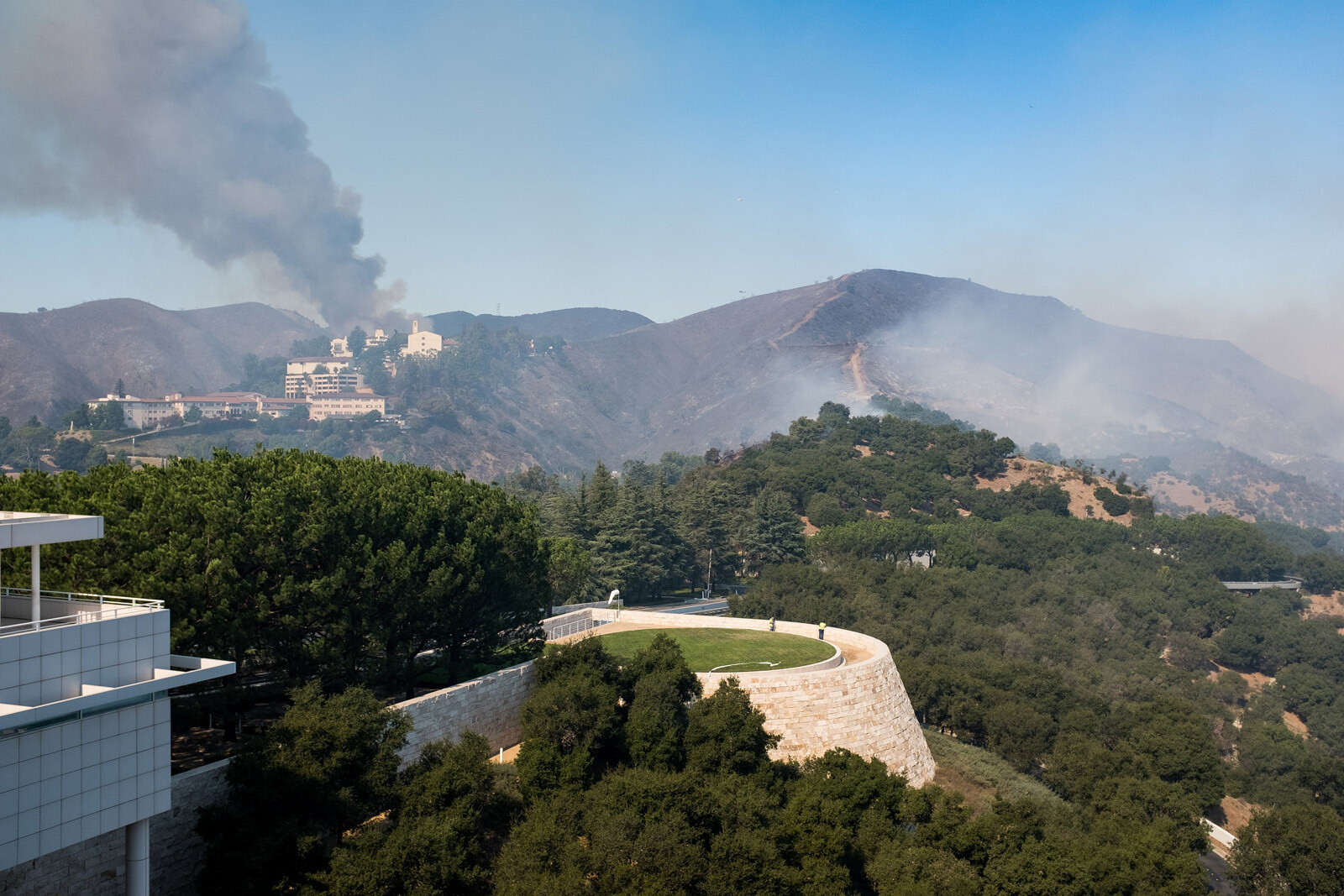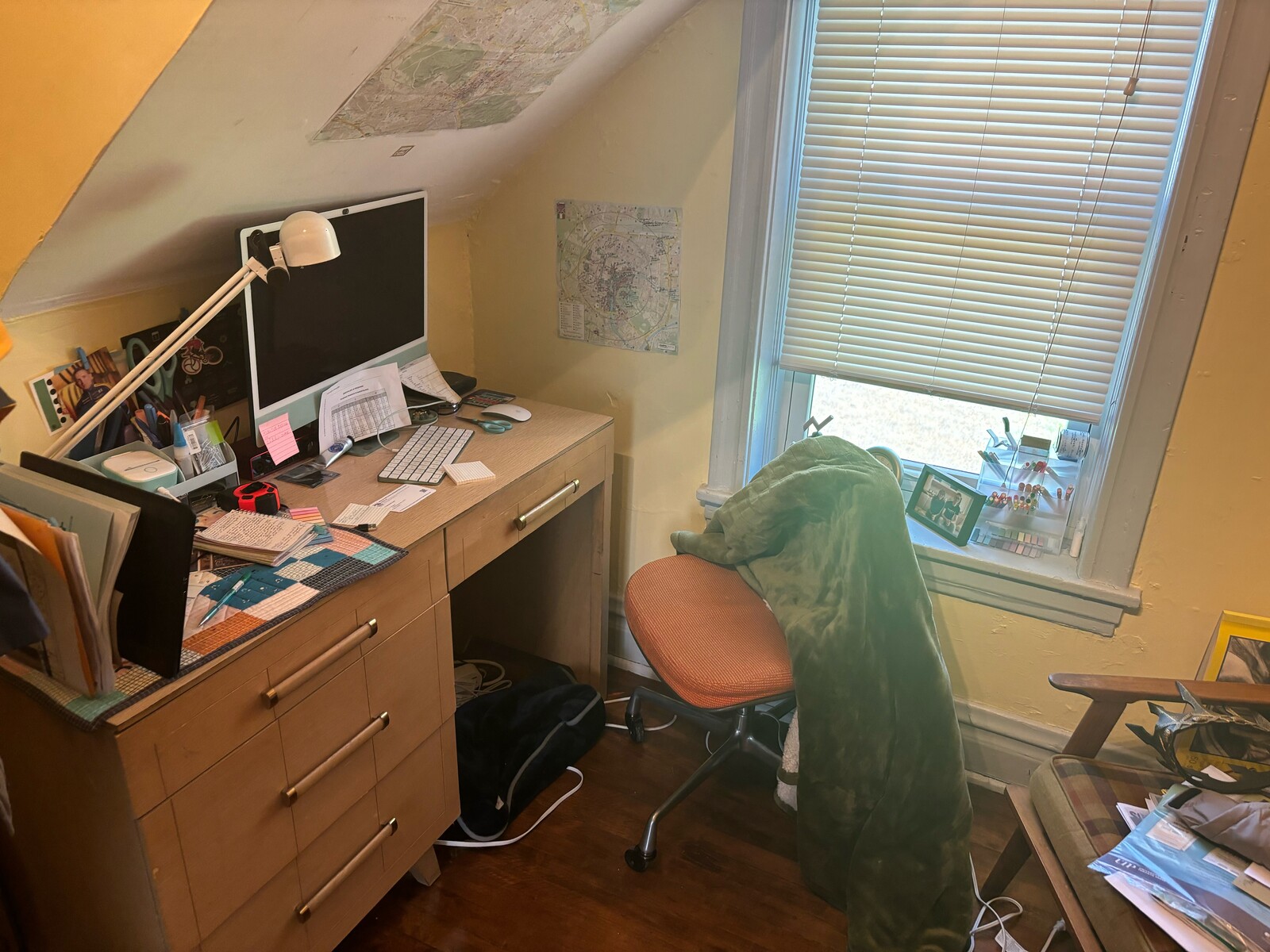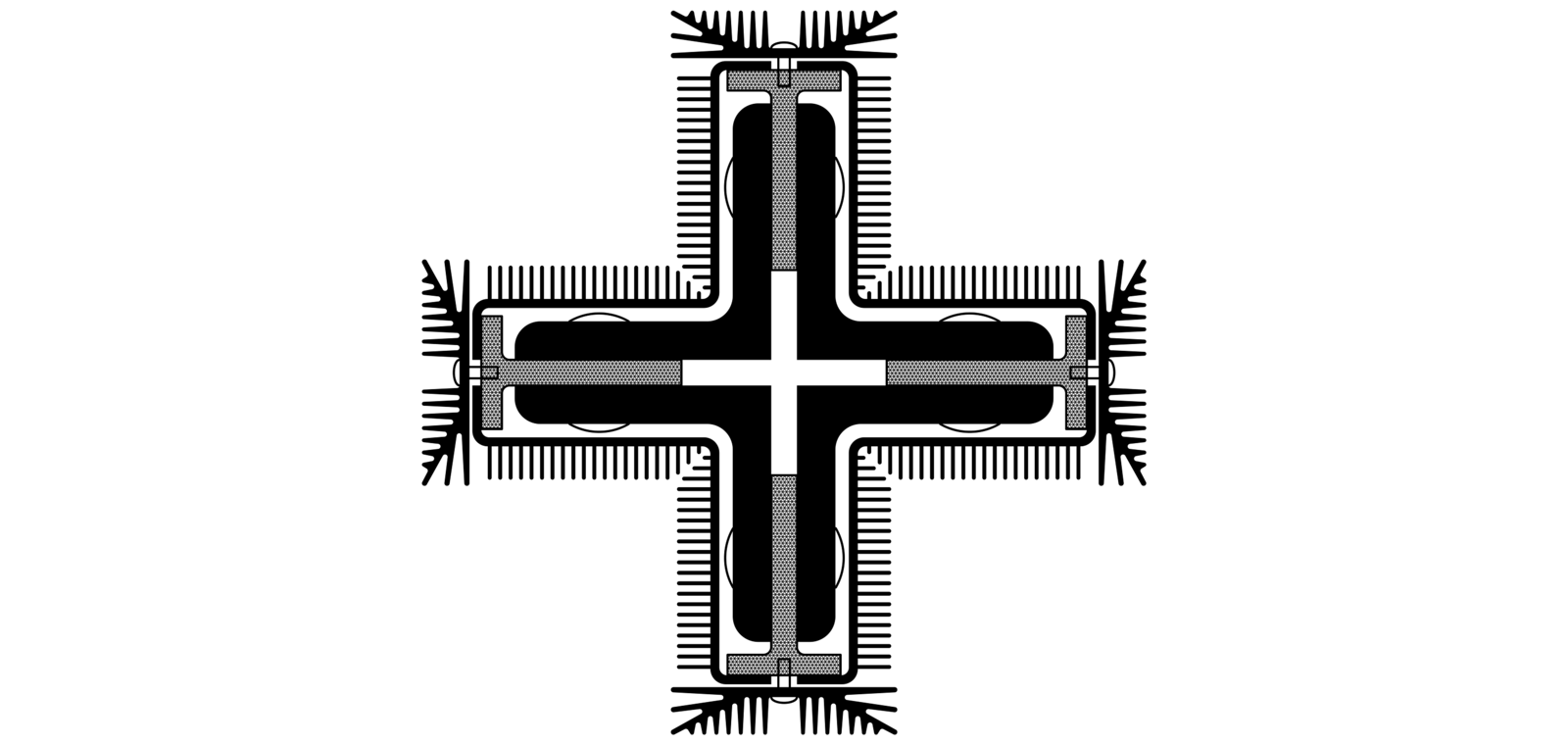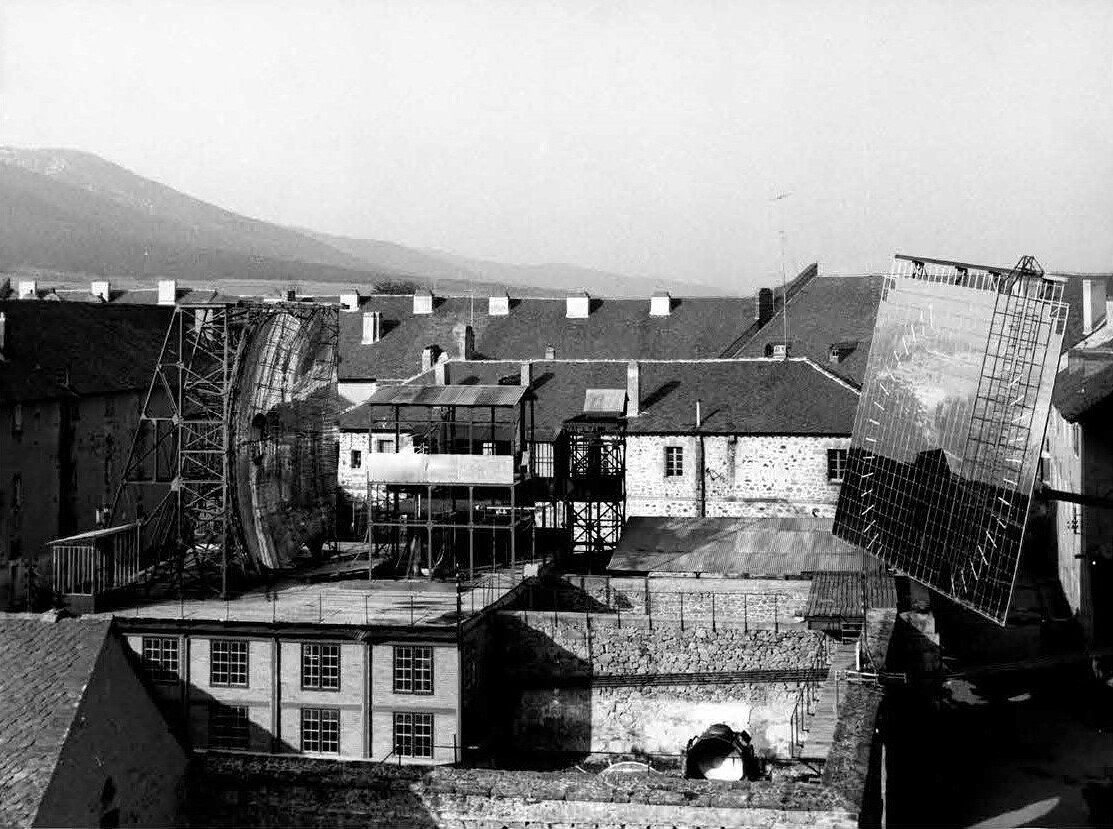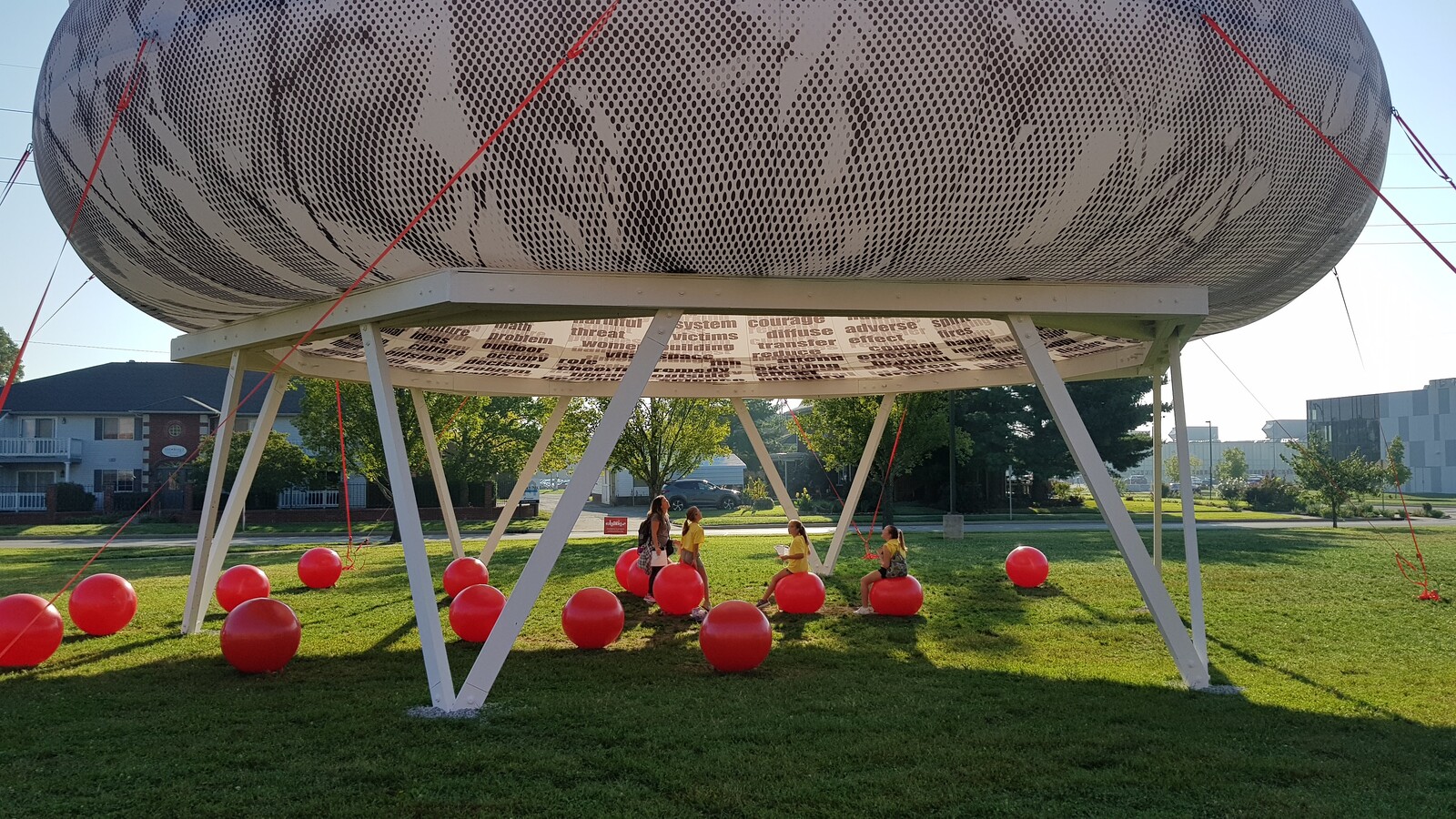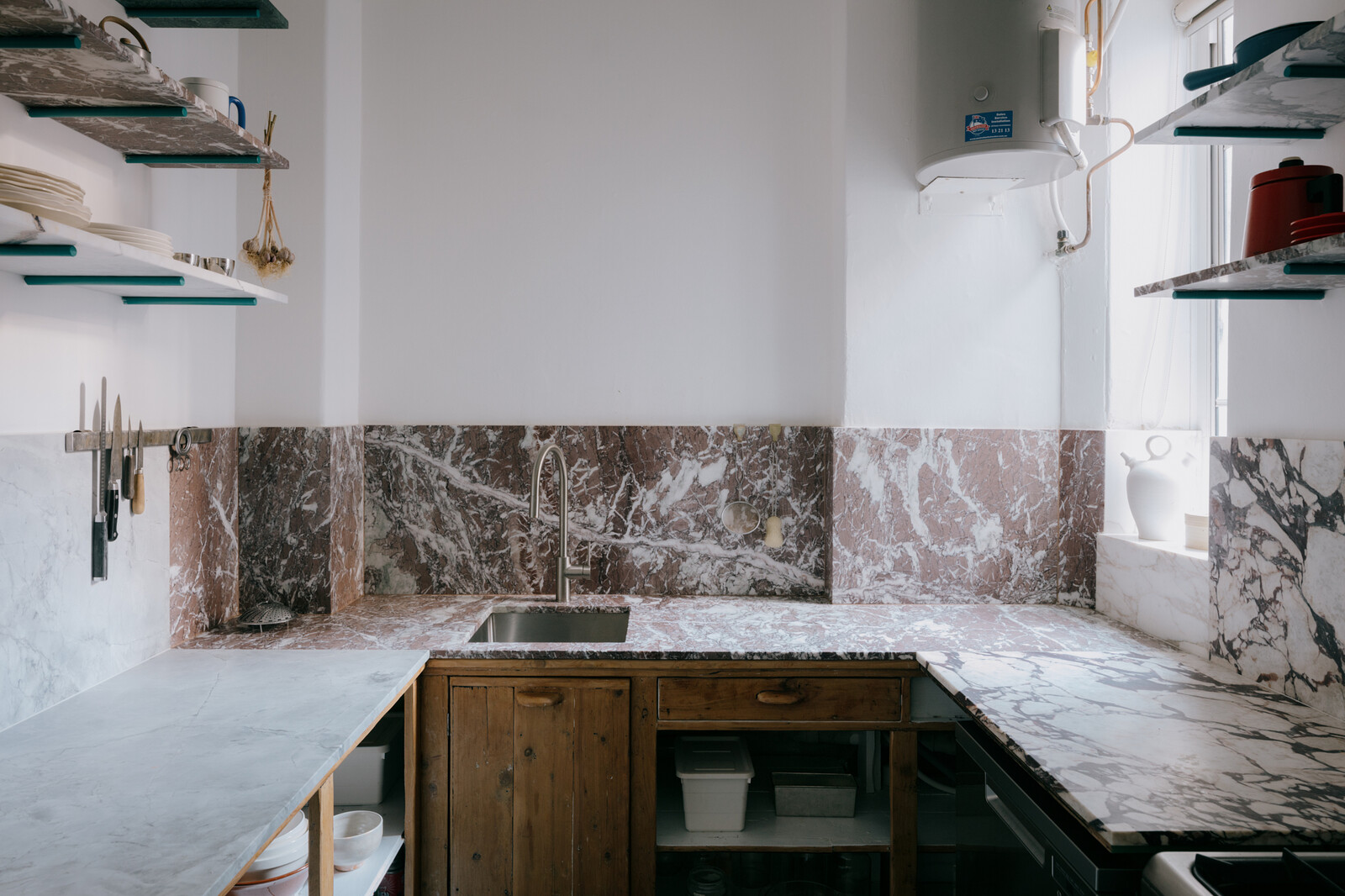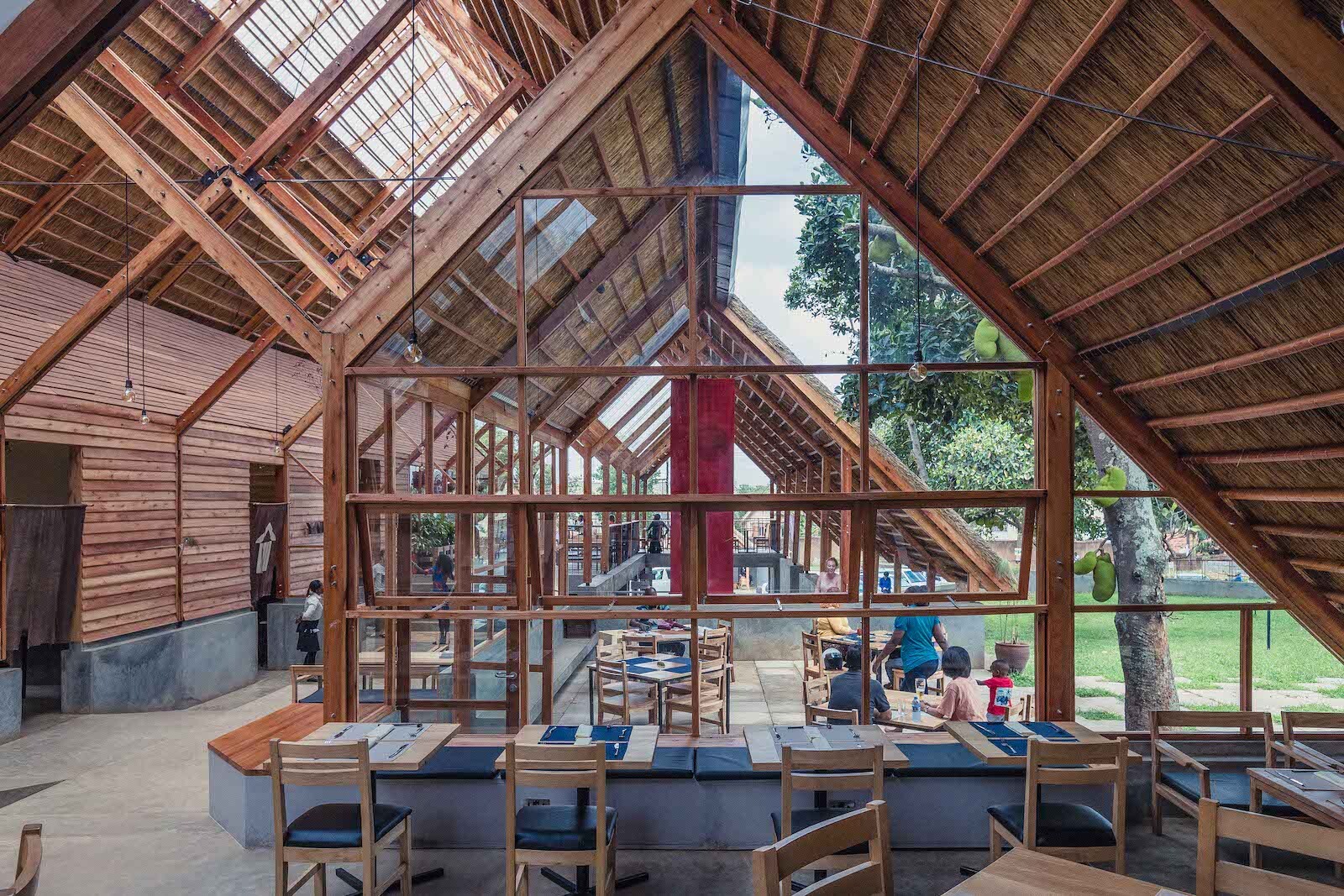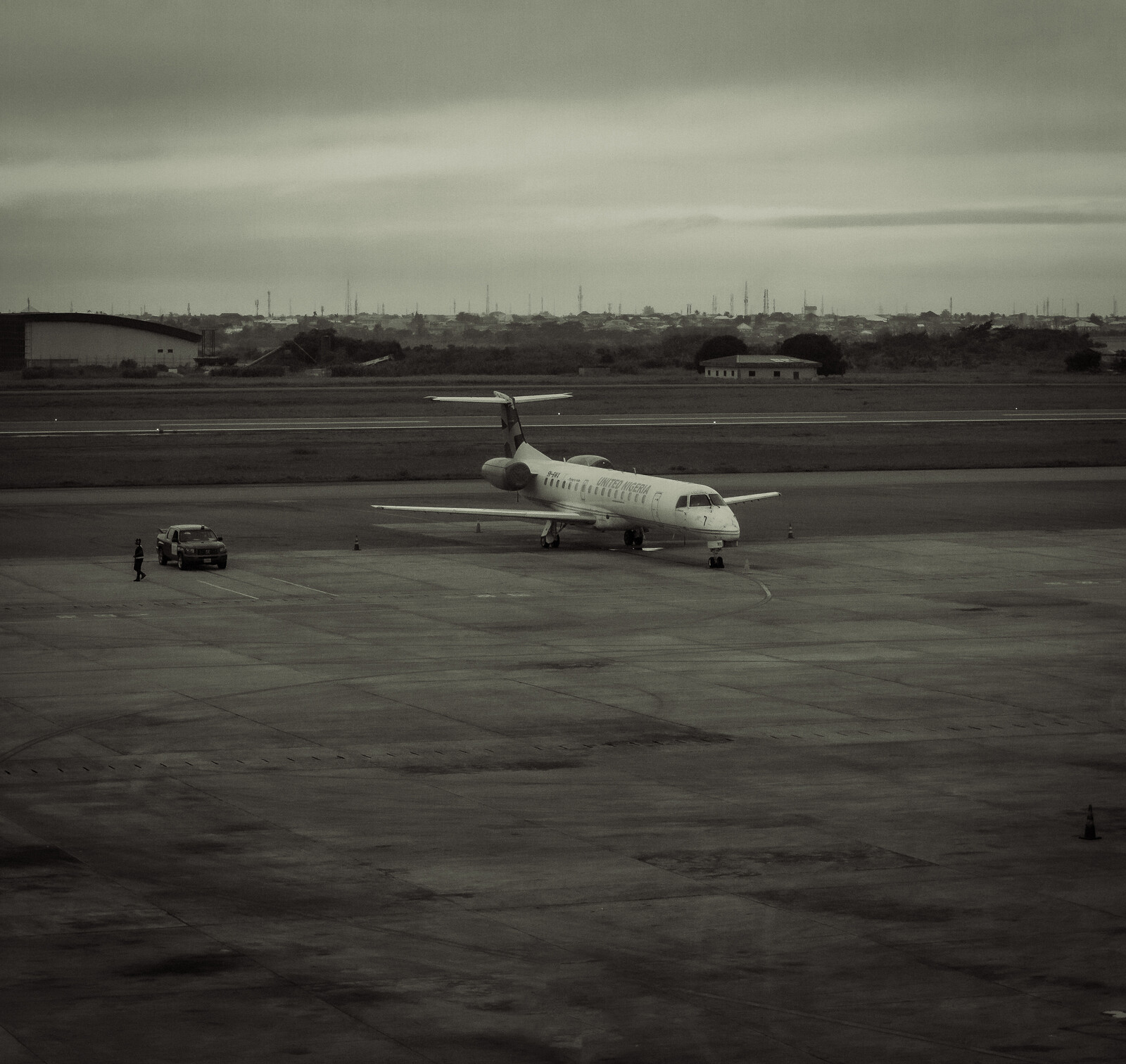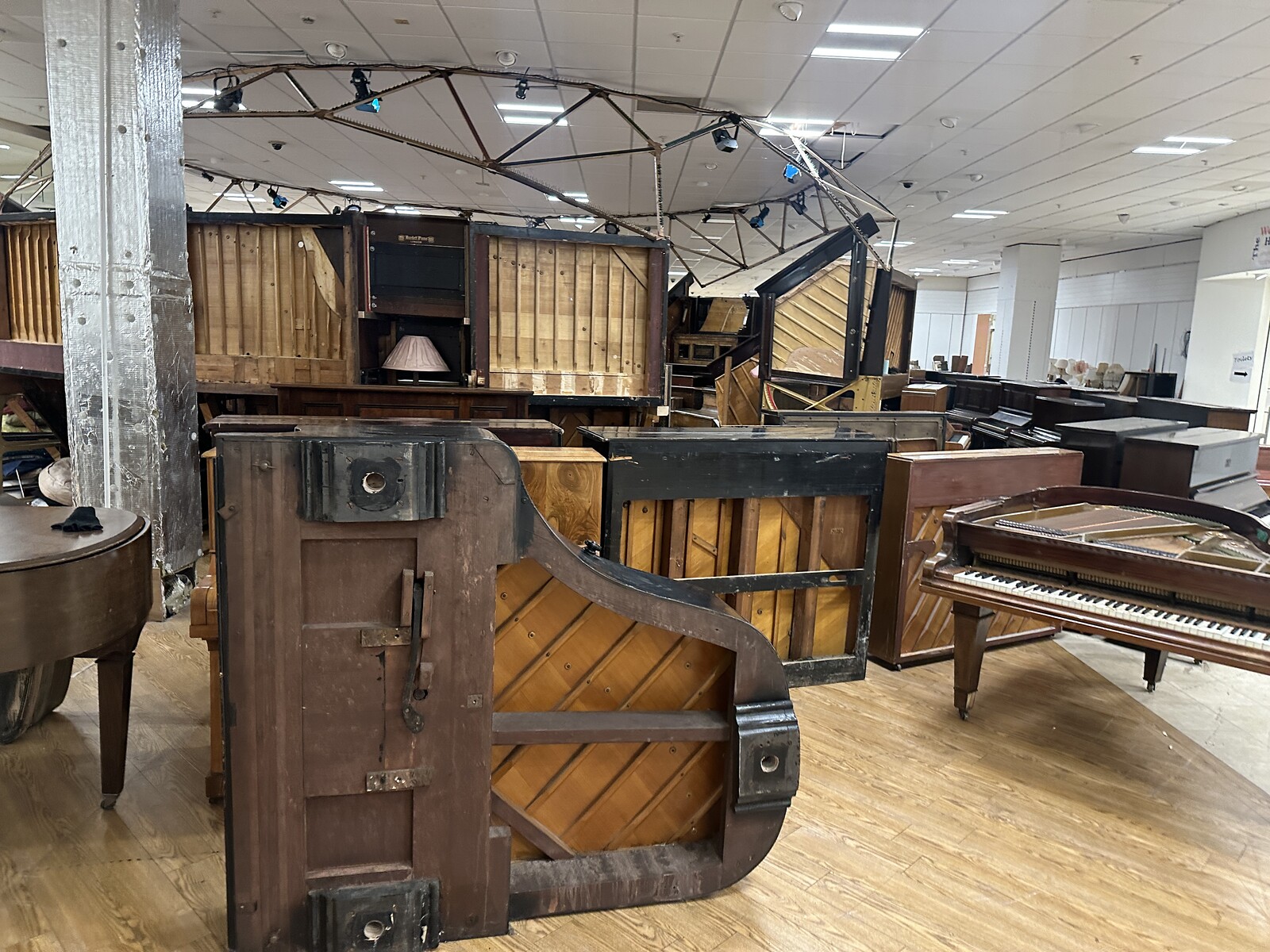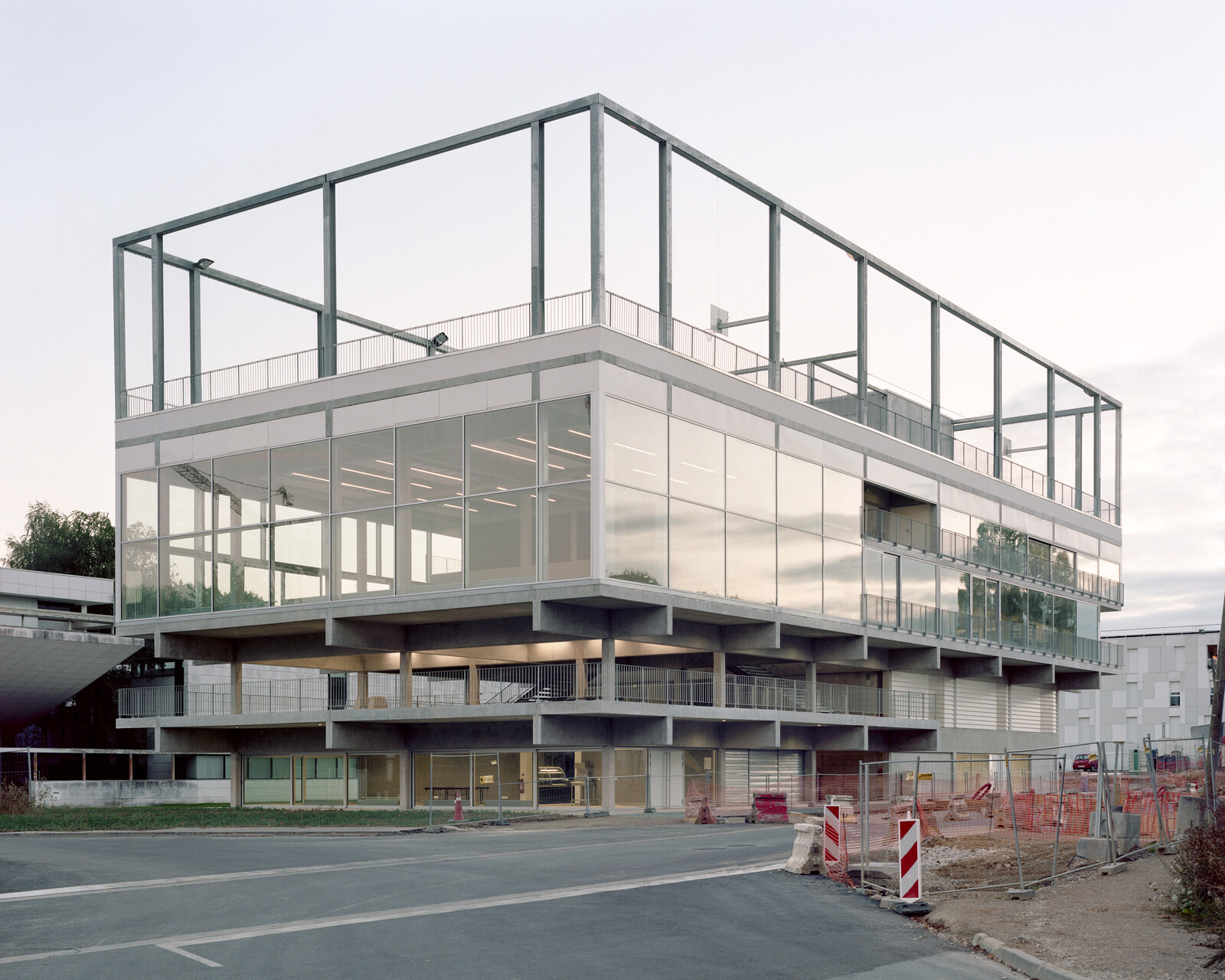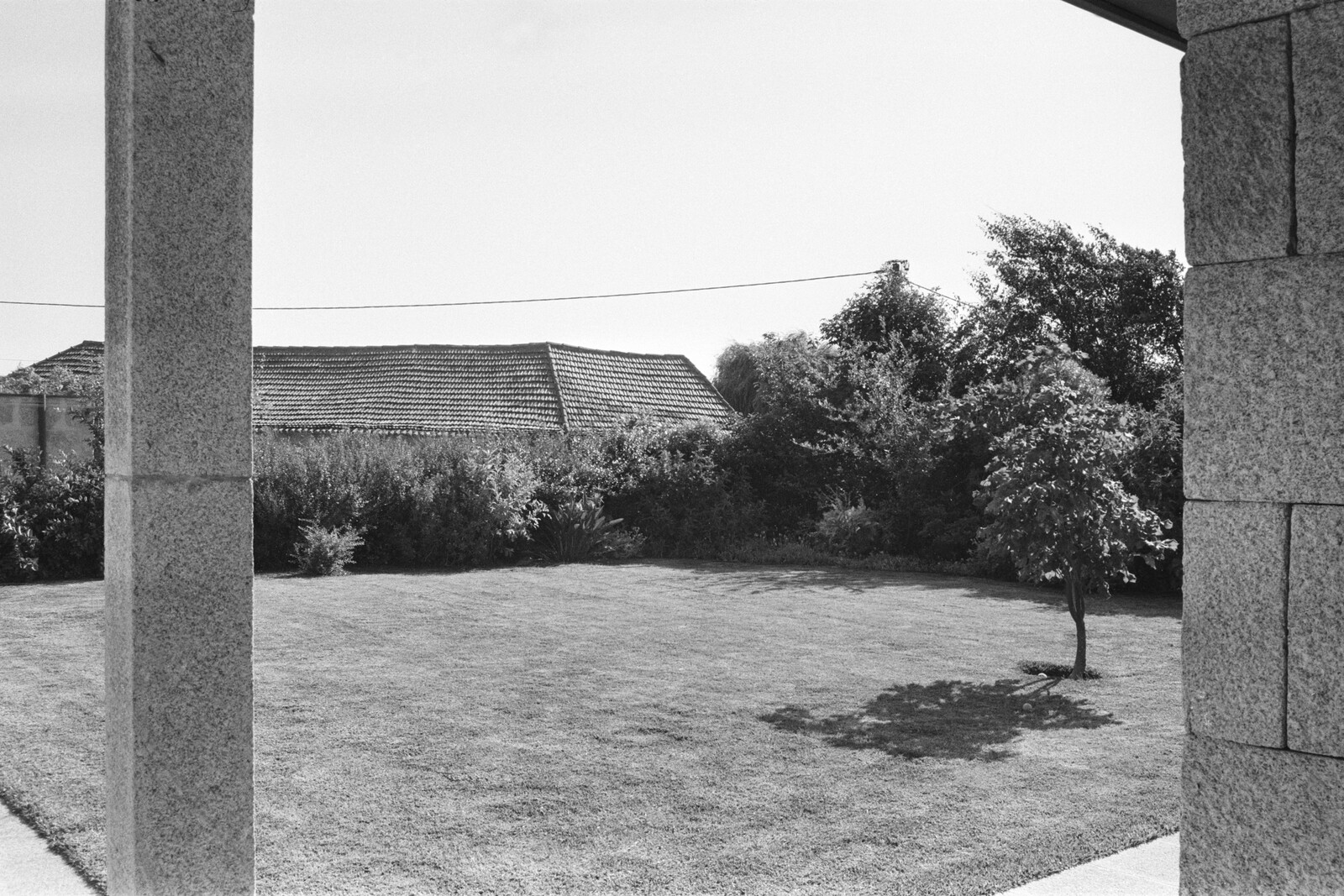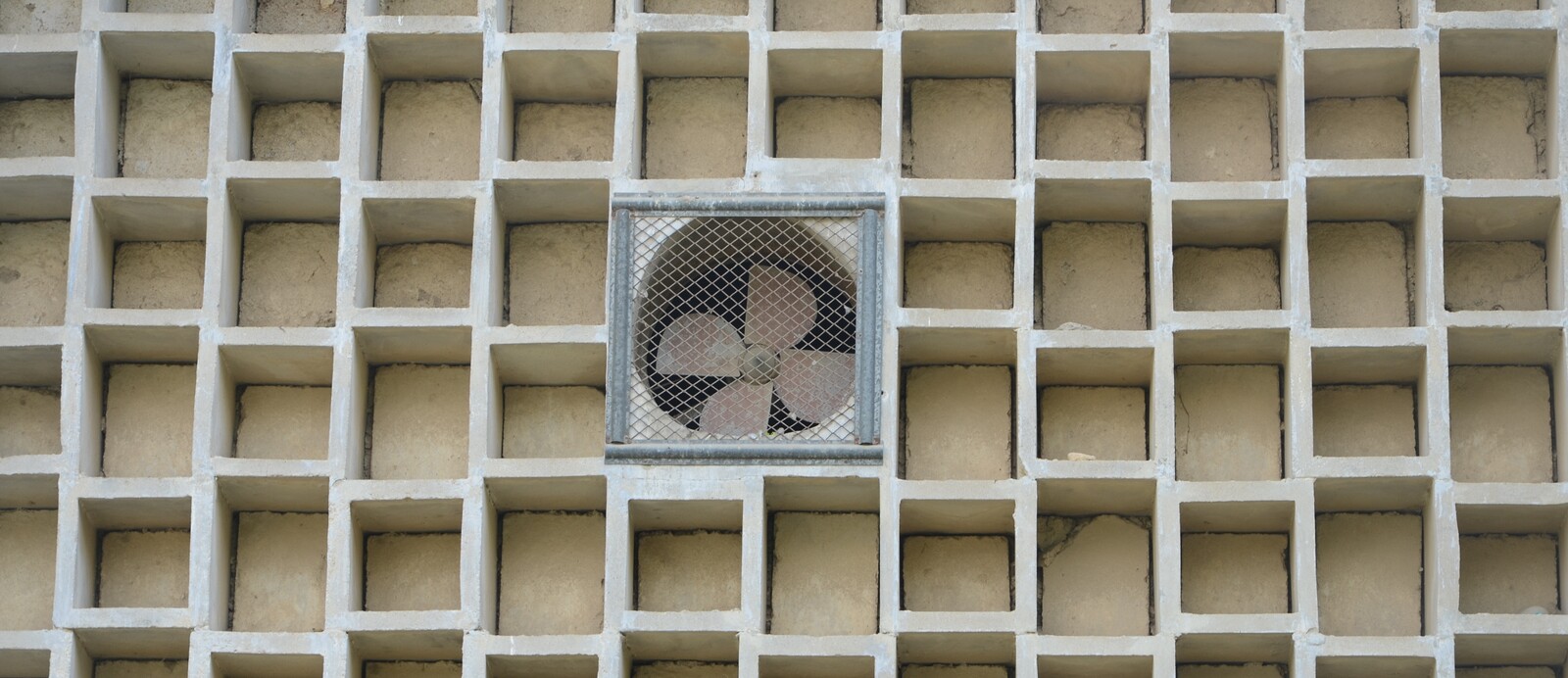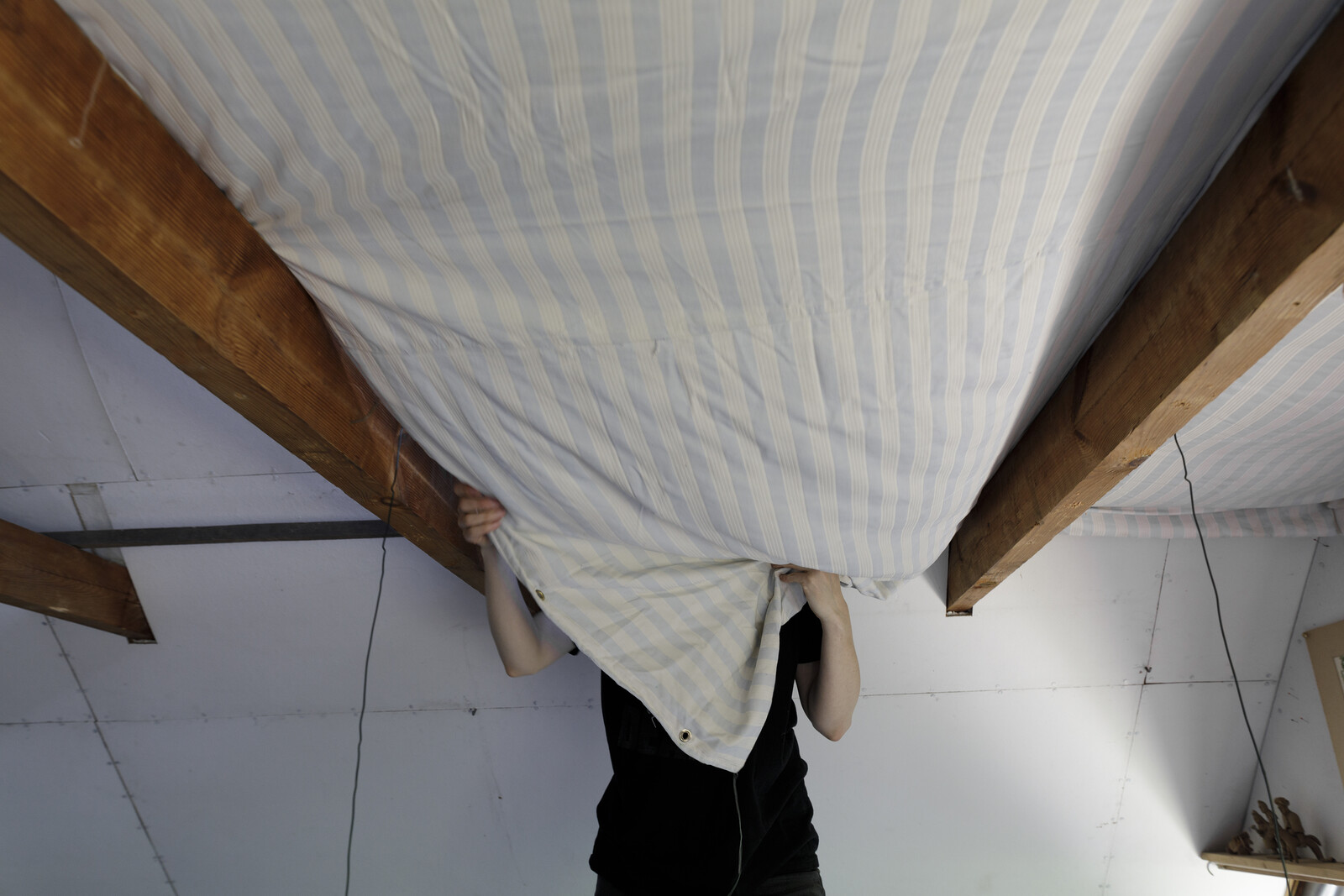When does the scope of architecture stop and landscape architecture start (and vice-versa) relative to thermally safe public environments? Disciplinary liability and insurance requirements for design practices often emphasize topics such as safety, quality of life, and the implementation of standards, yet they also raise questions concerning disciplinary boundaries in the context of thermal protection. While landscape architecture seems more concerned with the horizontal domain (the ground) and architecture with the vertical (the wall), interrogating bounded disciplinary scopes is essential for addressing issues of thermal adaptation, climatic justice, and decarbonization.
Climate is the result of energy exchange at the junction of the horizontal and vertical. Climate therefore operates on the diagonal, and on various scales, from smaller to larger territories. One example of large-scale thermal interactions is the variation in air temperatures and airflow directions between land and water over diurnal–nocturnal cycles. Thermal mass differentials between the two produces katabatic winds, which allow the built environment to “breathe” and exhale excess heat during the night. For an example of small-scale thermal interaction, longwave radiation increases heat stress and lowers comfort levels in public space, which was infamously illustrated a few years back by the thermal and convective impacts from the “Walkie Talkie” skyscraper in London.1
Heat adaptation, climatic justice, and decarbonization are interrelated, urgent disciplinary challenges. They are also opportunities for fostering new disciplinary sensibilities, methodologies, and praxes. This urgency is, however, not unprecedented, and architects have long claimed such constraints as opportunities to explore novel approaches to architecture, such as a closer integration of landscape as a bio-climatic medium capable of mitigating and protecting communities against thermal extremes. For instance, in the development of the Chandigarh’s Master Plan (1951–1966), Le Corbusier claimed that “India must treat the modern architectural form according to its sun, hygrometry, and wind regulations.”2 Similarly, in the context of her work at SESC Pompéia, São Paulo (1977–1986), Lina Bo Bardi argues for an “‘open’ architecture [that] accepts nature … makes itself comfortable and seeks to mimic it like a living organism … like a lizard on sunbaked rocks.”3 Both Le Corbusier and Bo Bardi brought disciplinary sensibilities from architecture and landscape together in order to support social life in close articulation and reciprocity with meteorological phenomena. The spatial expression of such convergence resulted in the idea of space as a threshold: a thick “membrane” between inside and outside, above and below, vertical and horizontal, that mediated thermal extremes and promoted an expanded locus for comfortable social interaction.


Assembly Palace at Chandigarh, 1951–1966. Photo: Iwan Baan.
Wall as (thermal) space
Le Corbusier began to perceive India’s climate as harsh during his first trip to the future site of Chandigarh, in the Himalayan foothills, on February 20, 1951. In his sketchbook, he captures the agrarian landscapes crossed by a network of footpaths and irrigation canals, adobe houses, and scenes of domestic life. In subsequent drawings, under the heading of “Vie domestique” (“domestic life”), he includes descriptions of the weather, including its impacts on daily life. In the hot month of May, he writes that “everyone sleeps outside,” and in September, the air is “madly” damp with simultaneously refreshing and pleasant “Southeast breezes.”4 During the same visit, Le Corbusier visited Jantar Mantar in New Delhi, the eighteenth-century astronomical observatory complex. “They point to a new way,” he writes of its structures; built to observe and analyze stars, planets, and orbits, they are “precise adaptations of forms and organisms to the sun, rain, air, etc.”5 Reflecting on architectural adaptations to the local climate and budgetary limitations that curbed the use of “machines of childish simplicity” (the architect’s phrase for mechanized systems for air exchange), Le Corbusier claimed that Chandigarh would be an opportunity for disciplinary innovation.6 The “architectural answer,” he pithily notes, is the “veranda.”7
Le Corbusier’s design work for Chandigarh during the early 1950s corresponds to a profound paradigm shift in his praxis. In the 1930s and 1940s, he defended the institutionalization of the murs neutralisant (“neutralizing walls”), a sort of air conditioning system that he initially saw as the architectural “answer” for “one single building for all nations and climates” with a constant interior air temperature of 18° Celsius.8 In the work for Chandigarh, however, this universal design premise was replaced by an emerging search for specificity and “localism.” The murs neutralisant at Chandigarh take the form of a cavernous veranda-like space, featuring openings, fins, projected roofs, and notches designed to regulate extreme temperatures while providing shelter for the rainy season. In initial sketches for the High Court building in Chandigarh’s Capitol Complex, where he experimented with a mur isotherme. Le Corbusier notes, “Do not hesitate to make grand empty naves full of shadow, generators of air currents … kids play there in the evening and the inhabitants sit all around.”9
Essential to this design were the climatic theories of the French climate control specialist André Missenard and the “bio-aesthetic planning” work of Mohinder Singh Randhawa in New Dehli.10 Each provided a solid scientific basis to support this emerging design sensibility, which manifested in the creation of two new design protocols, or “grids,” for the Congrès Internationaux d’Architecture Moderne (CIAM): the grille climatique (“climatic grid”) and the grille d’arborization (“tree-planting grid”).11 Both grids focused on thermal protection and were intended as guiding protocols for design at various scales of intervention. This involved strategically orienting buildings, programs, and open spaces in order to optimize natural ventilation, minimize solar heat gain, and control humidity. The “climatic grid,” designed in collaboration between Le Corbusier and André Missenard, was structured as a matrix encompassing three key categories: meteorological data (air temperature, relative humidity, wind direction and velocity, and thermal radiation from nearby surfaces), bioclimatic challenges encountered during each season by the prospective residents or users, and design solutions aimed at ensuring human comfort and well-being. The “tree-planting grid” consolidated diverse tree arrangements (single and multiple rows, bosques, isolated trees, groves, or forests), and selected tree species and their placement across the various typologies of open space in the city—from the circulation network and the Capitol Esplanade to local streets and commercial strips in the residential sectors.12
The first application of the climatic grid in Chandigarh was in Le Corbusier’s typological studies for the Maison des Péons (1950–1965), low-income housing blocks for government workers that were to be built throughout the various sectors of the new capital.13 Developed in collaboration with Missenard, the bio-climatic strategies for heat reduction and ventilation pioneered in the Maison des Péons served as design protocols to guide the team responsible for the residential sectors in the new capital, which included the architects Jane Drew, Maxwell Fry, and Pierre Jeanneret. The typological study for the Maison des Péons took the form of a compact, single-story block for seven hundred and fifty residents, with interior gardens, courtyards, and access roads oriented east-west to avoid direct sunlight and maximize exposure to the dominant winds.14 Each 110-square-meter residential unit includes a backyard garden facing the street, which contains layers of trees, ground cover, and espaliers on the walls, while a system of sprinklers amplify humidity during the dryer months. Lush vegetation, a trellis, and a detached roof undulates above the roof slab to catch breezes and enhance cooling. Honeycombed partition walls on the interior allow wind to move thorough the units, cooling both inside and out, while slender partitions on the exterior support sunshades and verandas open to the tree canopy.15 The units also include a “parasol,” a curved plane elevated above the vaulted roof and painted white to “reflect the thermal rays.”16 Similar to a mur isotherme, the threshold between interior and exterior in the Maison des Péons is a cavern-like space, with shadows and air currents promoting social life throughout the residential blocks. Operating as a thick buffer zone for climatic amelioration, this threshold relies on multiple layers of elements: fins and honeycombed walls, sunshades and mats, water and air flow, perforated partitions and texturized surfaces, and layers of vegetation across the façade, ground, and roof.
Following this strategy, Le Corbusier developed another “wall” typology for the Capitol Complex: murs de verdure (“walls of greenery”). These dense walls of trees were intended not only to amplify the shaded hollowness of the murs isothermes in the Capitol buildings’ facades, but also to shelter the walkways in the large esplanade. He envisioned using these walls of trees to create chambres de verdure (“rooms of greenery”) as outdoor spaces of cool refuge.17 To extend the scale and rhythm of the arches in the Palace of Assembly, Le Corbusier proposed “walls alternating with rings of cypresses,” extolling the spaces within them as “chambers of dark shadows” for delight and reflection.18 This emphasis on deep arches and elongated spaces of intense shadow is a direct reference to the “Baradari,” the arched open-air pavilions in the region’s historic Mughal gardens that Le Corbusier visited and sketched during his trips.19
The vertical section as bio-climatic space
While Le Corbusier revisited the “veranda” as murs isotherme and murs de verdure in Chandigarh, in her design for the Social Services of Commerce Community Center, or SESC Pompéia (1977–1986), Lina Bo Bardi operationalized the vertical section and thermal stratification to improve the building’s climate. There, underground spaces are strategically designed to cool the rooms above, and in tall spaces, program is distributed relative to the different temperature elevations. If the underground spaces offer opportunities for intense cooling through geothermal strategies and high thermal mass, the tall, overground spaces promote air exchange for enhanced ventilation. The thermal interactions achieved by Bo Bardi’s sectional approach promote heat relief for the local community of Pompéia. Moments of delight and wonder are in a continuous exchange with, as she writes, the “subtle substances” of “air, light, and nature.”20 These substances were an inspiration for Bo Bardi. In her first impressions of the site, a former Mauser Brothers steel-drum factory, she notes:
there was a happy crowd of infants, mothers, fathers, older people passing from one pavilion to another. The rain was dripping though the cracked roofs, children were running around, and boys were playing soccer, laughing as they kicked the ball through the puddles … I thought: all of this should continue like this, with all this happiness…21
Bo Bardi believed that both architecture and landscape had a mission to honor communities’ cultural legacies and social contexts. To support equity and create nurturing environments for children and elders to grow, learn, and interact, her architecture crafts and amplifies “situational” micro-climates for the spiritual and physiological wellbeing of disenfranchised communities, such as in Pompéia. These objectives were first expressed in 1943, in an article she wrote on rural and vernacular architecture.22 She believed that the legacy and intelligence embodied in works of architecture produced by local communities had been forgotten or suppressed by the ever-growing economic interests of capitalism and its political forces, which led to alienation in modern Brazilian cities. Bo Bardi saw traditional and vernacular architecture as a means to elicit ancestral and instinctive psychophysiological sensations, to reconnect with everyday social practices, to be aware of the natural rhythms of the cosmos, and to be conscientious of available materials and what nature could offer—materially, bio-climatically, and symbolically.
In her later essay “Architecture and Nature,” Bo Bardi maintains that “nature pacifies, and for this very reason the study of nature should be the primary source for the study of architecture.”23 It is not surprising, then, that the first sketch that Bo Bardi made for SESC Pompéia has the title “Landscape.” The drawing depicts a vertical section through the old factory’s larger sheds, the site of the future “gathering center.” It showcases two levels connected by serpentine ramps, for people to meander among lush climbing plants that emerge from the roof and ground, all flooded with intense sunlight.24 In a subsequent drawing of the same space, she depicts colorful strips of vegetation, large gardens, and an amoeba-like body of water stretching throughout the rigid structure of the old factory. Both drawings reflect Bo Bardi’s idea of “harmonious fusion” between people and space, architecture and landscape, the ground and the sky, community life and meteorological rhythms—all “joined with nature.”25
From the onset of the project, Bo Bardi highlighted the favorable bio-climatic attributes of the existing factory shed complex. This includes its advantageous orientation against direct solar radiation and its maximum exposure to the dominant winds, both of which cool workers’ bodies during demanding physical activities. The north-facing sides of the sheds’ pitched roofs are clad in brick tiles that prevent direct solar radiation from entering the interior. Meanwhile, the large, operable south-facing clerestory windows facilitate the entry of prevailing breezes, ensuring ongoing cross ventilation. Expanding on the existing thermal and buoyant qualities of these large sheds, which would become the gathering center of the SESC complex, Bo Bardi added an iconic water feature—a shallow reflecting pool that she symbolically named “River São Francisco.”26 This feature, shaded by the roofs above, adds humidity during dry and hot summer days and cools through adiabatic evaporation. Furthermore, she included an exuberant collection of native aquatic plants and a few delicate water jets throughout the course of the water body. The added evapotranspiration promoted by the jets (adiabatic) and plants (isothermal), the radiant cooling from the shaded water surface, and the buoyancy derived from the “lighter” humid air makes the gathering center one of the most airy and comfortable spaces in the SESC’s complex, even today.
Simultaneously, Bo Bardi used the principle of air stratification (cold air gathering at lower levels and hotter air moving upward) in the gathering center to organize different age groups and associated programmatic functions. The children’s play and learning area, for instance, is on the ground level and sits underneath cantilevered concrete volumes. This creates a cave-like environment that is colder and darker than the surrounding areas. Here, young children, parents, and teachers interact and learn while sheltered against thermal loads. The senior library, conversely, occupies the upper levels of these cantilevered volumes, where it is warmer and exposed to indirect light. Here, groups of seniors come together to read the daily newspaper and books, discuss, and play board games. This intergenerational coexistence is essential to Bo Bardi’s social approach to architecture. As she elaborates, “Architecture is not only a utopia, but a means to achieve certain collective results … People of all ages, elderly and children, all getting along well.” And all, it seems, comfortable in a carefully designed interior climate.27
Another vertical articulation of thermal phenomena for bio-climatic nurturing occurs around the wooden deck at the far south of the SESC complex, close to the large sports tower, which Bo Bardi referred to as the “Indian Solarium,” but locals call the “Beach of São Paulo.” This particular area was initially seen by the project commission to be a challenge: “a subterranean ‘rainwater’ channel’ [actually the famous Águas Pretas riverbed] made almost all of the grounds destined for the sports zone a ‘no-build’ area.”28 Instead of channeling stormwater with conventional subterranean concrete drainage pipes, Bo Bardi deepened and widened the drainage trench so that it could humidify São Paulo’s dry air, provide radiant cooling, and absorb rainwater overflow. Above and along this widened trench, Bo Bardi designed a wooden deck approximately five meters wide for the community to lie down, sit, play, sunbathe, and refresh themselves. Through conduction, lower albedo, and solar radiation, the deck provides heat to those lying on its dark wooden planks. Simultaneously, however, cold air ascends from beneath, passing through open gaps in the wooden planks. Bo Bardi also incorporated two cooling water-features along the length of the deck: the “open-air communal shower” to the west and the “waterfall” to the east, referred to by Bo Bardi as the cachoeira.29 The simultaneous heating up and cooling down of bodies results in an uncanny and thrilling thermal experience, one that is cherished and celebrated by the local community.
Rather than mitigating variance with technocratic fixes such as air conditioning and mechanical ventilation, climate is a cultural medium to design with and for. The disciplinary ethos in addressing such challenges is materialized through the idea of space as a thermal threshold. This is manifested in Le Corbusier’s murs isotherme and murs de verdure, and in Lina Bo Bardi’s gathering center and “Beach of São Paulo.” Such thermal thresholds operate at the convergence of landscape and architecture, of interior and exterior, of above and below, of the private and the public, of the vertical and horizontal, and are spaces in themselves—thermally inclusive and socially vigorous. The spatial thresholds developed in plan by Le Corbusier and in section by Lina Bo Bardi are spaces where disciplines and scopes of work cross, blur, and advance for climatic inclusion and protection, as well as the public good.
Longwave radiation corresponds to the thermal energy (heat) that surfaces exposed to sunlight (shortwave radiation) reflect, or emit back to their immediate surroundings. The sunlight reflected from the glassy, concave facade produced temperatures as high as to 93°C on the sidewalks a few blocks away, forcing gusty down drafts capable of raising cyclists in the air. The recorded temperatures fried eggs, melted car tires, and, most importantly, threatened human lives. “London’s ‘Walkie Talkie’ skyscraper reflects light hot enough to fry an egg,” The Guardian, September 3, 2013. See ➝.
Le Corbusier to P. N. Thapar, December 9, 1951, Fondation Le Corbusier P2-17-183.
Lina Bo Bardi, “Arquitetura e Natureza ou Natureza e Arquitetura,” September 27, 1958, Instituto Lina Bo Bardi and Pietro Maria Bardi Archive, São Paulo. All translations are by the author, unless otherwise noted.
Le Corbusier, Sketchbook “Album Punjab Simla I,” February 25, 1951, Fondation Le Corbusier W1-5-18.
Le Corbusier Sketchbooks, Vol. 2, 1950–1954 (Cambridge, MA: MIT Press and New York: Architectural History Foundation, 1982), E18: 330.
These “machines” were filters, humidifiers, and disinfectors, mechanized systems for air exchange. Le Corbusier, The Radiant City (New York: Orion Press, 1967), 40, 42.
Le Corbusier, Sketchbook “Album Punjab Simla I,” February 25, 1951, Fondation Le Corbusier W1-5-18
Le Corbusier, Precisions sur un état present de l’architecture et de l’urbanisme (Paris: G. Crès, 1930), 64.
Le Corbusier, Sketchbooks, 403.
For more on the influence of Dr. Randhawa and André Missenard, see Silvia Benedito Atmosphere Anatomies: On Design, Weather and Sensation (Zurich: Lars Müller Publishers, 2021).
The grille climatique is a matrix composed of meteorological data, bio-climatic challenges, and design corrections for comfortable conditions. Various iterations were developed from 1951 until 1956. The grille d’arborization was a matrix of tree species organized according to volume and canopy intensity, considering comfort in relation to the various public spaces’ uses and adjacent programs.
For more see Benedito, Atmosphere Anatomies.
Le Corbusier recognized that the architectural enterprise of designing-with-climate aligned with social justice objectives. Every individual and family, independent of its origins and social level, would have equal access to nourishing bio-climatic conditions in their corresponding block (Sector) of the new capital of India. The Sectors are self-contained “blocks,” including residential spaces as well as commercial spaces, health care facilities, offices, parks, and pedestrian areas.
Le Corbusier, Carnet Nivola I, Fondation Le Corbusier W1-8-100 and 101.
Le Corbusier, Carnet Nivola I, Fondation Le Corbusier W1-8-93 and 94.
Le Corbusier, Plans, DVD #11, Fondation Le Corbusier 05603.
Le Corbusier, “Arborisation de Chandigarh” (1952), Fondation Le Corbusier P2-2-10.
Le Corbusier, Sketchbooks, 748. “La Main // par des massifs alternés de cyprès en couronnes // chambre d’ombre noir.”
Le Corbusier, Nivola Sketchbooks I, Fondation Le Corbusier W1-8-87. Le Corbusier sketched the “Baradari” of the Diwan-i-Am, or the “Hall of Public Audience,” during his visit to the Red Fort in Delhi. His sketch emphasizes its shaded arches, the landscape to either side, and a water basin in the foreground.
Lina Bo and Carlo Pagani, “Sensibilità dei material,” Domus no. 201 (September 1944): 314–319, here 316.
Lina Bo Bardi, “The Architectural Project,” in Stones Against Diamonds (London: Architectural Association, 2013), 97. The French engineer and builder François Hennebique (1842–1921) was a pioneer of reinforced concrete construction. He developed the unified design of beams and columns as a single monolithic structural system used in the barrel factory: possibly the only example realized in Brazil.
In the essay “Architettura e natura: La casa nel paesaggio” (“Architecture and Nature: The house in the landscape”), Bo Bardi wrote: “A more realistic approach will restore the relationship between architecture and LAND–CLIMATE–ENVIRONMENT–LIFE, thus destroying any form of superficiality, prejudice, and decorativism.” Lina Bo Bardi, “Architecture and Nature: A House in the Landscape,” in Stones Against Diamonds (London: Architectural Association, 2013), 21-26, here 21, 22, 23 (emphasis in original). Originally published as “Architettura e Natura: La casa nel paesaggio,” Domus no. 191 (November 1943): 464–71.
Lina Bo Bardi, “Propaedeutic Contribution to the Teaching of Architecture Theory: Nature and Architecture” (1957), in Cathrine Veikos, Lina Bo Bardi: The Theory of Architectural Practice (Abingdon: Routledge, 2014), 67. Originally published as Contribuição Propedêutica ao Ensino da Teoria da Arquitetura (São Paulo: Habitat, Ltd., 1957), 67.
Bo Bardi drawing, June 10, 1977.
Bo Bardi, “Architecture and Nature,” 22.
This was in homage to the communities being displaced by large hydropower projects in the São Francisco River valley.
Lina Bo Bardi, in “SESC Pompéia” Leaflet History, SESC Pompéia São Paulo (2006), 14. See ➝.
Bo Bardi, “The Architectural Project,” 98.
Bo Bardi, “The Architectural Project,” 100.
After Comfort: A User’s Guide is a project by e-flux Architecture in collaboration with the University of Technology Sydney, the Technical University of Munich, the University of Liverpool, and Transsolar.
